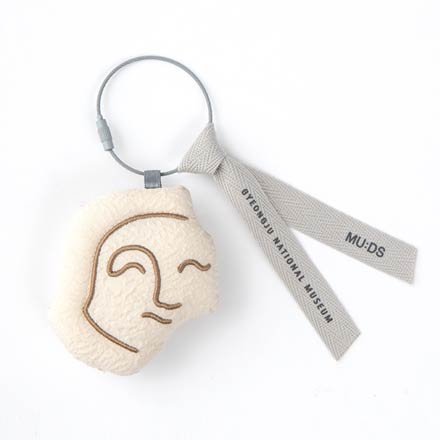
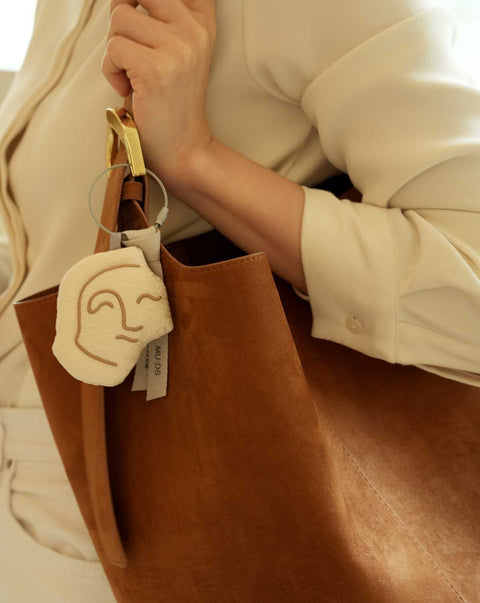
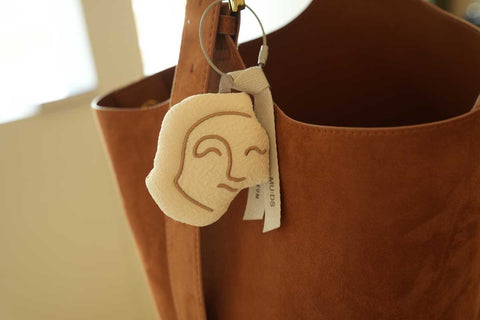
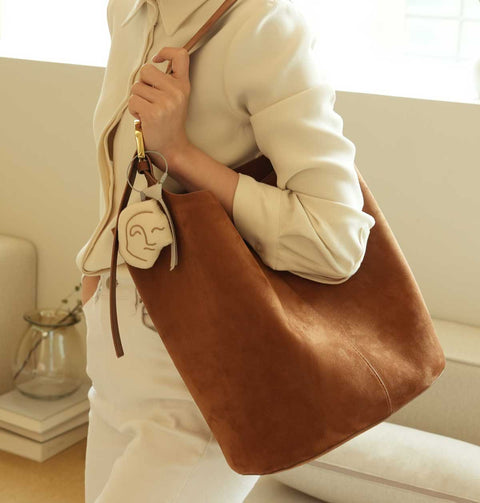
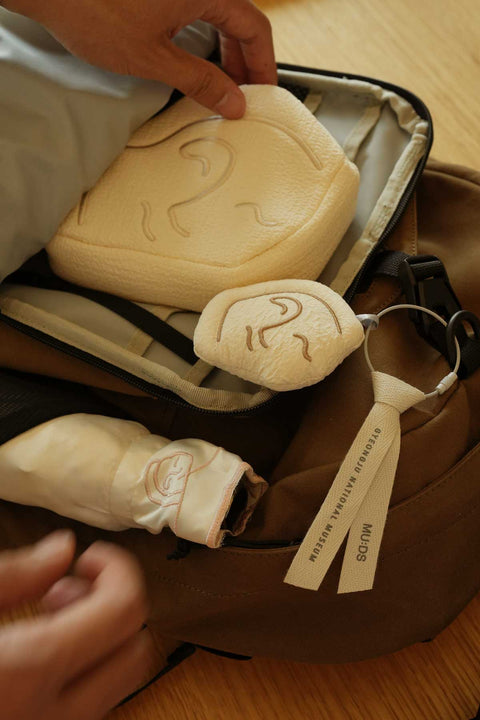
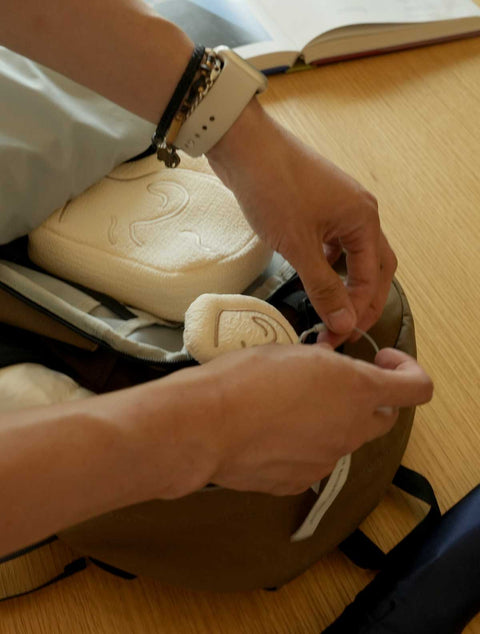
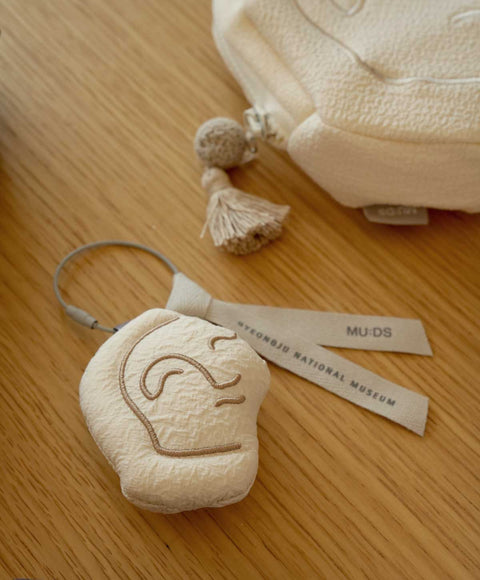
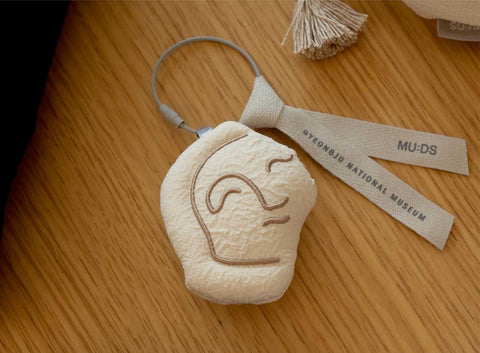
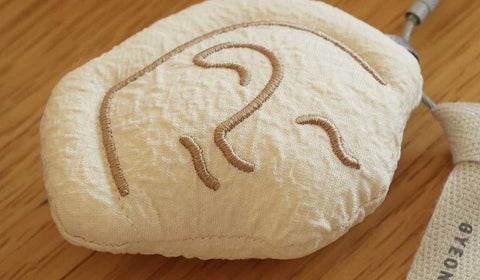

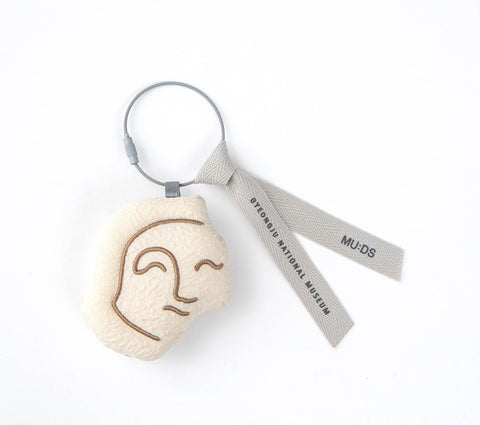
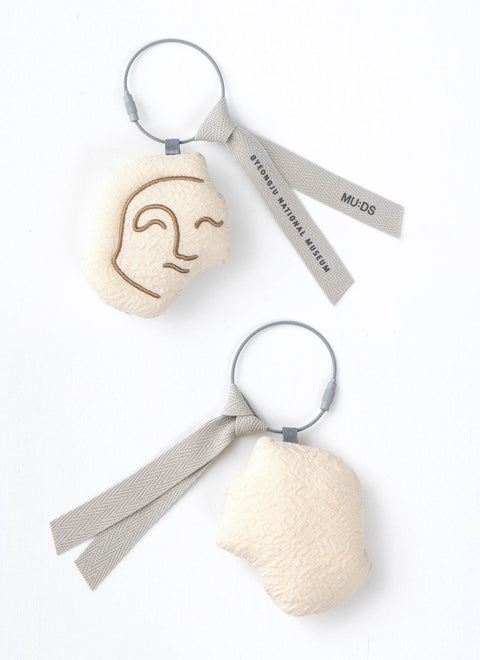
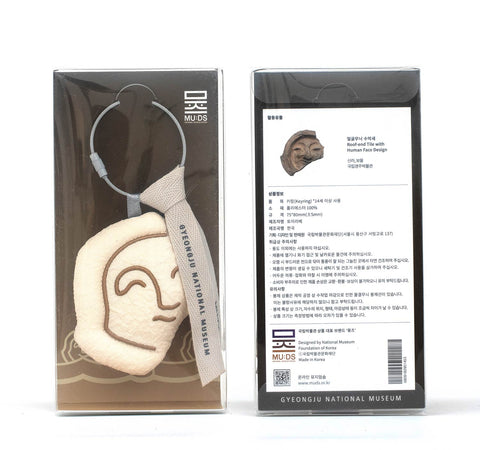
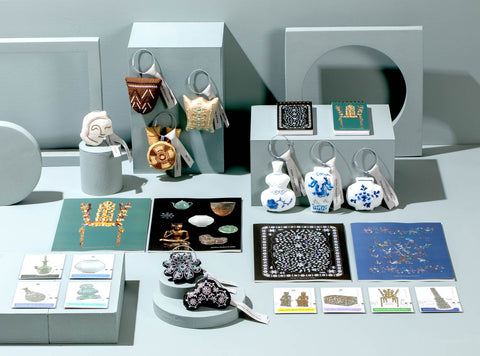
Keyring (The Smile of Silla)
Keyrings in the Form of Items from the Collection of the National Museum of Korea
(The Smile of Silla)
Product : 75X80mm
Package : 85X170X30mm
Weight : 60g(70g)
Concept
A range of practical stationery and lifestyle products has been designed with the aim of bringing the beauty of items from the collections of the national museums into everyday life. This new range of museum souvenirs is presented in the hope that visitors can fondly remember their experience at the museum as a place where history and culture come alive. With these souvenirs featuring a variety of items from the museums’ collections, you are invited to relive your visits and cherish the memories for a long time
Features
This keyring replicates the shape of a designated artifact and is complemented by detailed embroidery. It is designed to bring museum artifacts into everyday life in a familiar and enjoyable way.
Decorate your personal items like bags or pouches with this keyring and enjoy it in a fun and unique manner.
Handling Guidelines
-Do not use for purposes other than those intended.
-Keep the product away from heat, flames, and sharp objects.
-If dirty, wipe gently with a soft cloth and allow it to air dry in a well-ventilated, shaded area.
-Avoid using washing machines or dryers, as they may cause deformation.
-Be cautious of color transfer when in contact with dark-colored clothing or accessories.
Notes
-This product is recommended for use by individuals aged 14 and above.
-Do not use for purposes other than those intended.
-There may be irregular seams since the finishing process is done by hand. Please note that this is not considered a defect.
-Due to the nature of stitching, there may be slight differences in size, embroidery placement, shape, and finishing quality.
Relic
The Roof-end Tile with Human Face Motif, also known by its nickname, Silla smile, was discovered in Sajeong-ri (present-day Sajeong-dong) in Gyeongju in the early twentieth century. The ornamental tile was introduced to academic circles after a Japanese collector named Tanaka Toshinobu purchased it at an antique shop in 1934. The tile was smuggled to Japan sometime after the purchase, and was not repatriated to Korea until October 1972.
Unlike other ordinary tiles, which were made using tile molds (wabeom), this tile was made by shaping the desired form by hand and then finishing it with tools. The details of the face suggest that it is the work of an experienced craftsman, while the tile itself shows traces of use. Although the tile is partly damaged, the details of the face - including the clearly defined eyebrows, nicely raised nose and gentle smile lines around the eyes and mouth - have been preserved, reflecting the Silla people’s aspiration for a utopian world.
The tile is the only known ornamental roof-end tile made in Korea to have been made by hand, and is regarded as a valuable part of the Korean cultural heritage reflecting the humble, humane life of the common people of Silla and excellence in the tile making .

